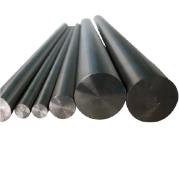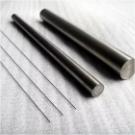**When Acid Meets Metal: The Fiery Dance Behind Etching Art**
(What Is The Term For The Corrosive Action Of Acid On A Metal Plate In Acid-Dependent Intaglio)
Imagine dipping a metal plate into acid and watching it sizzle. This isn’t a mad scientist’s experiment—it’s the heartbeat of an ancient printmaking method called intaglio. Artists have used this fiery dance between acid and metal for centuries to create stunning, detailed artworks. But what’s the technical term for this corrosive magic? The answer is *etching*. Let’s dive into how this process turns plain metal into intricate art.
Intaglio starts with a smooth metal plate, usually copper or zinc. The artist coats the plate with a waxy layer called a *ground*. They scratch their design into this ground using sharp tools, exposing the metal beneath. Now comes the acid. The plate gets submerged in a bath of acid—often nitric acid or ferric chloride. The acid attacks the exposed metal, biting into it and carving grooves. These grooves hold ink later, forming the final image.
Why does acid eat metal? Acids contain charged particles that react with metal atoms. In nitric acid, hydrogen ions and nitrate ions team up. They break down the metal’s surface, creating pits and channels. The longer the plate sits in the acid, the deeper the grooves. Artists control the depth by timing the bath. Shallow grooves hold less ink for lighter tones. Deeper grooves mean darker, richer lines.
Etching isn’t just chemistry—it’s a balancing act. Too much acid, and the lines blur. Too little, and the image fades. Artists often stop the acid’s action by rinsing the plate in water. They might re-coat parts of the plate and repeat the process for layered effects. This step-by-step control lets them build shadows, textures, and fine details.
Rembrandt mastered this technique. His etchings show everything from wrinkled faces to stormy skies. Each line started with acid chewing into metal. Today, artists still use the same basic steps. They mix old-school methods with modern twists, like using acrylic grounds or experimenting with different acids.
But why metal? Why not wood or stone? Metal’s durability matters. Acid bites evenly into metal, giving predictable results. Copper is soft and reacts well. Zinc costs less but still holds details. Steel offers sharper lines for industrial applications. Each metal changes how the acid behaves, adding unique flavors to the art.
The final step is printing. After washing off the ground, the artist rubs ink into the grooves. They wipe the surface clean, leaving ink only in the etched lines. The plate gets pressed onto damp paper under high pressure. The paper sucks ink from the grooves, revealing the mirrored image. Each print is a snapshot of the acid’s handiwork.
(What Is The Term For The Corrosive Action Of Acid On A Metal Plate In Acid-Dependent Intaglio)
Etching proves destruction can be creative. Acid doesn’t just ruin metal—it sculpts it. Artists harness this raw power, guiding chaos into precision. Next time you see an etched print, remember: those delicate lines began with acid and metal locked in a gritty, transformative tango.
Inquiry us
if you want to want to know more, please feel free to contact us. (nanotrun@yahoo.com)


